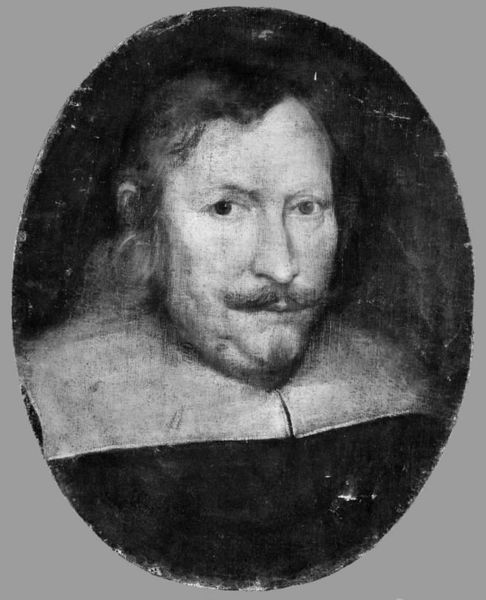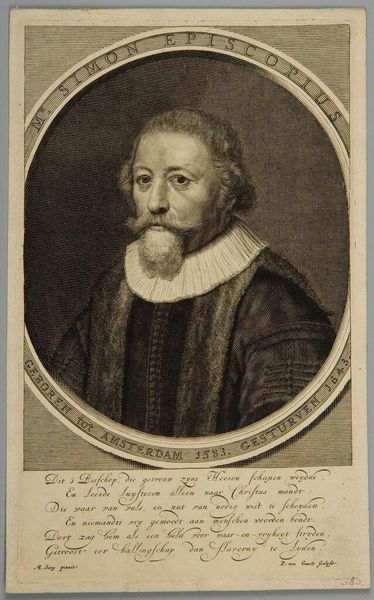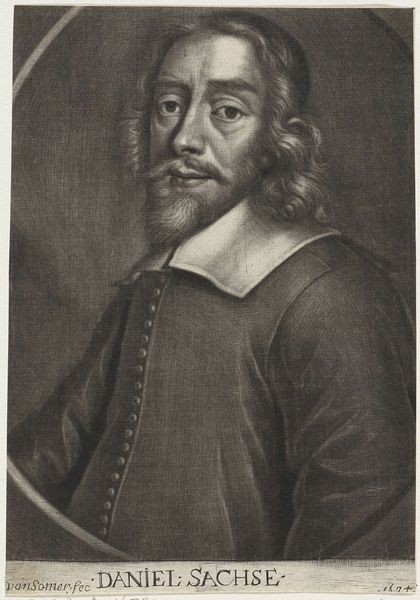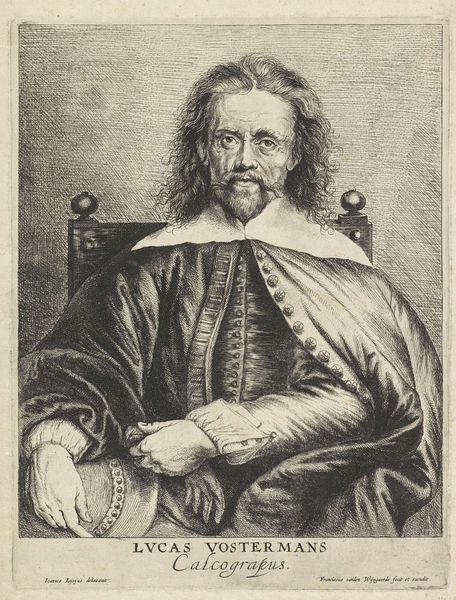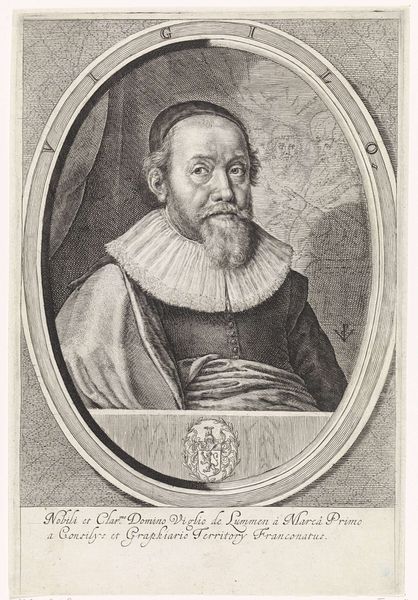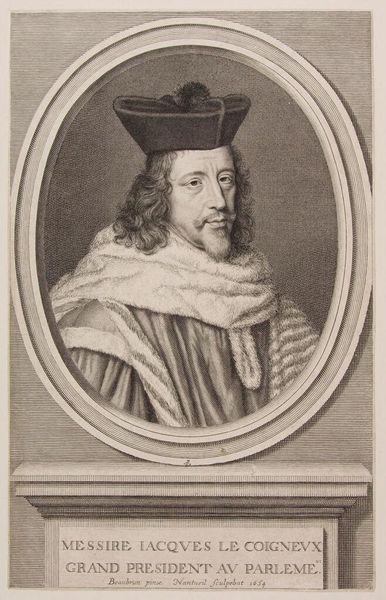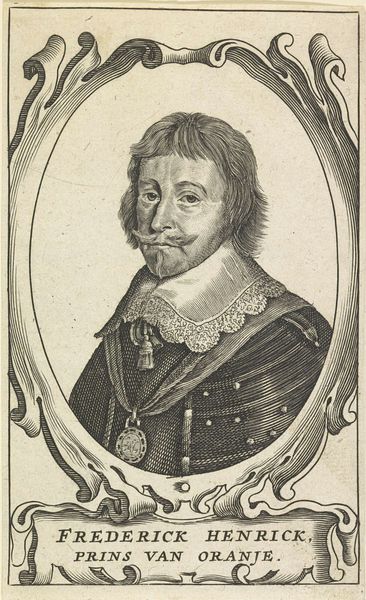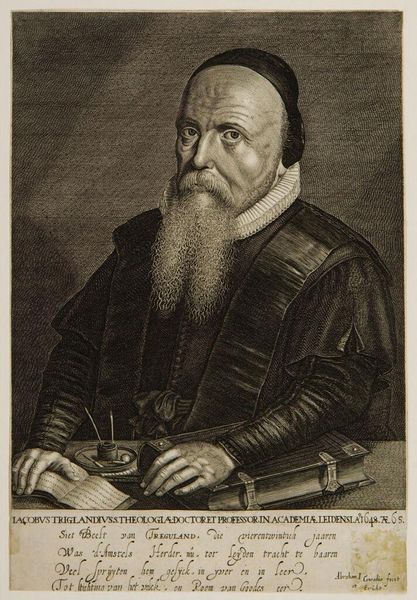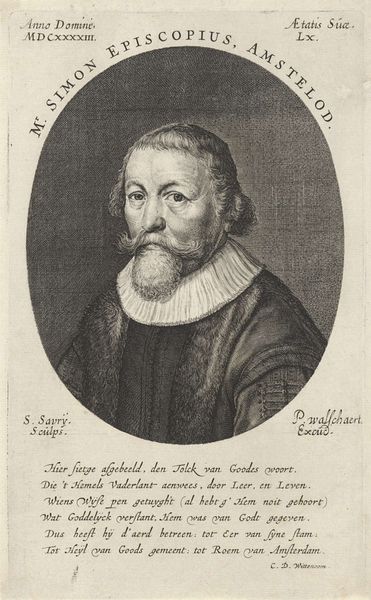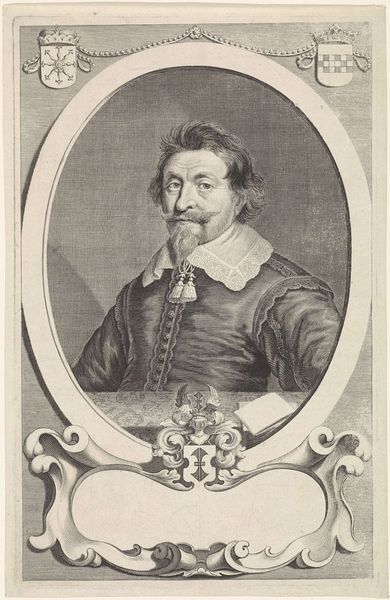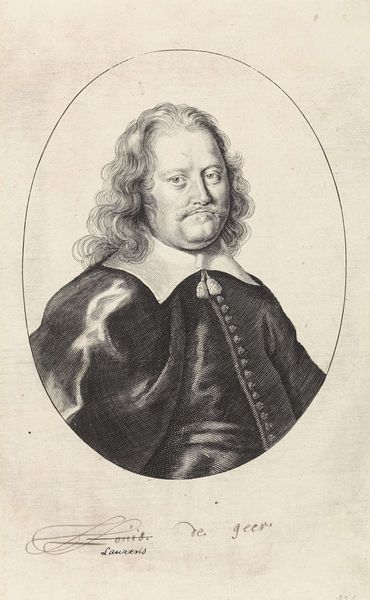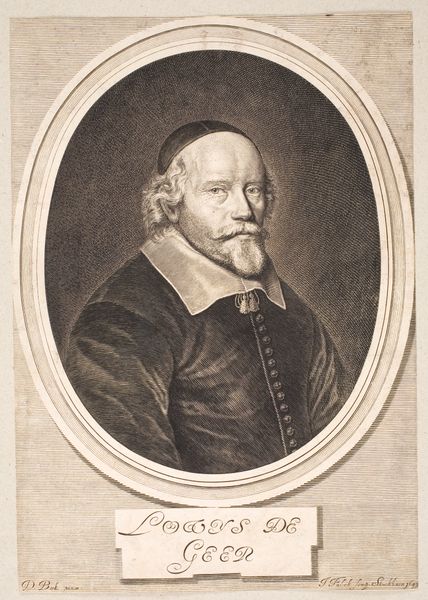
oil-paint
#
portrait
#
baroque
#
portrait image
#
portrait
#
oil-paint
#
male portrait
#
portrait reference
#
portrait head and shoulder
#
portrait drawing
#
facial portrait
#
portrait art
#
fine art portrait
#
realism
#
digital portrait
Dimensions: 8.6 cm (height) x 6.7 cm (width) (Netto)
Curator: Here we have a compelling portrait rendered in oil paint from the period between 1658 and 1662. It is simply titled, "Portræt af en herre," or "Portrait of a Gentleman." Editor: Immediately, I'm struck by its rather somber, contemplative mood. The palette is quite restrained, mostly grayscale tones, lending an air of seriousness to the subject. Curator: Indeed. The sitter is presented in a conventional, Baroque style, positioned in an oval format that was popular during that time. Consider the artistic and political landscape in Europe back then: powerful nations consolidating and projecting power through imagery, carefully crafted to inspire reverence. Portraiture played a crucial role in this. Editor: I agree, but it also speaks to an interesting moment of proto-individuality beginning to peek through social constraints, what the man's eyes are saying might speak more to an inner world. It prompts questions about identity, representation, and power dynamics of the 17th century. Is he aware of his privileged position being recorded for posterity? Curator: Certainly. While this may not be as lavish as other formal portraits of the period, note how the details in the beard, hair, and clothing give a sense of his status, as he subtly conveys social position. Editor: Absolutely, and it’s tempting to consider how art functioned back then, and still functions today: as a form of social capital, allowing certain voices and likenesses to become the focus of our shared culture and institutions. This portrait invites me to consider who isn't being represented and the institutional power at play. Curator: And that conversation itself underscores how an artwork such as this continues to spark timely insights. Editor: Absolutely, and I think bringing fresh perspectives to even the most established canons allows for new meanings to emerge, and for history to engage us more meaningfully.
Comments
No comments
Be the first to comment and join the conversation on the ultimate creative platform.
